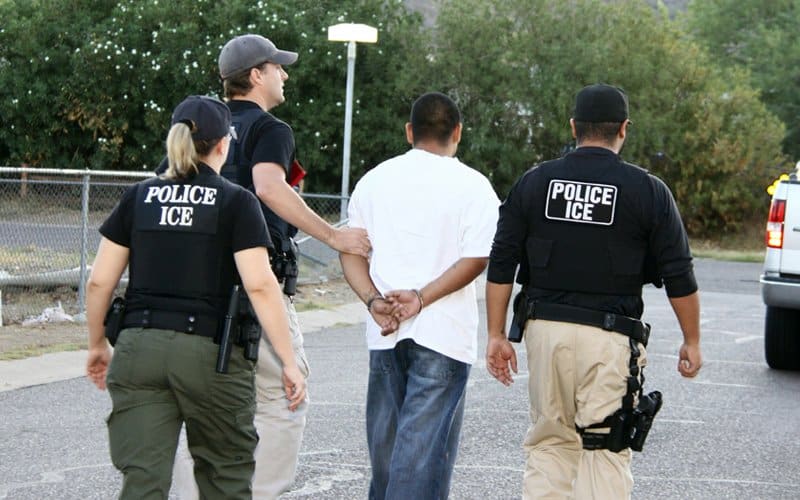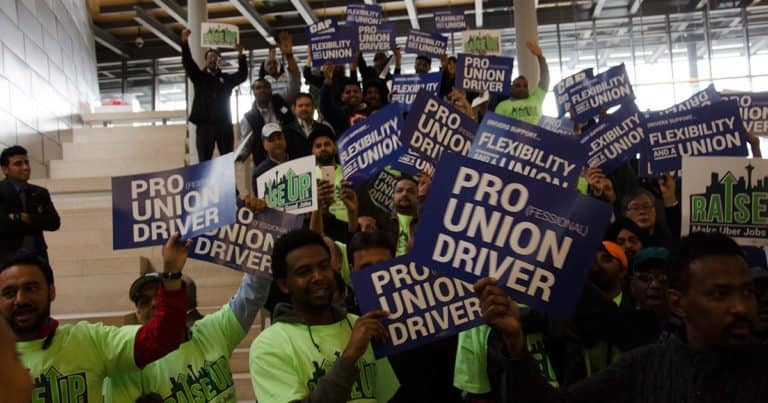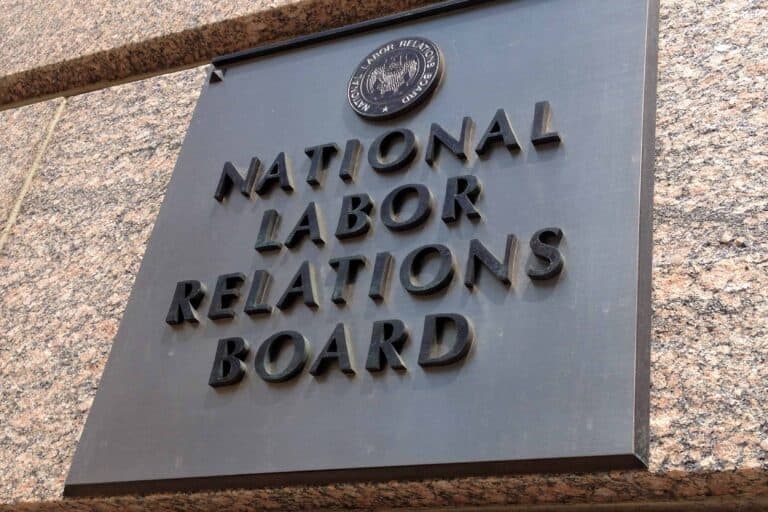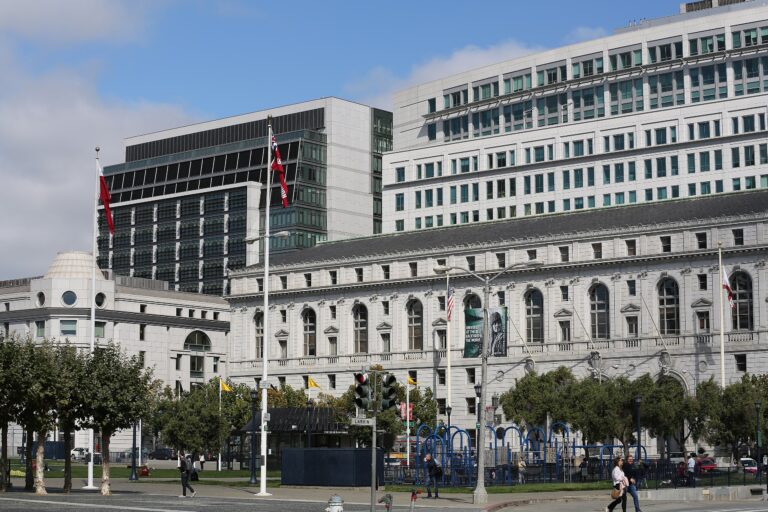Randon Herrera is a student at Harvard Law School.
In 2017, ICE agents reportedly showed up to labor dispute proceedings at the California Division of Labor Standards Enforcement (DLSE) on two separate occasions in an attempt to arrest undocumented immigrant workers. Officials suspect that employers tipped off the agents.
In theory, this kind of retaliation against undocumented immigrant workers trying to assert their labor rights is illegal under federal law. Some states, like California, have even enacted additional legislation to empower undocumented immigrants to assert their rights. Yet, because of incidents like the ones that occurred at the DLSE in 2017, where ICE agents were waiting in the very places that undocumented immigrants are expected to assert their rights, those rights are under threat.
Beginning in 2017, Trump administration policies led to an increase in ICE agents pursuing immigrant enforcement actions in courthouses and other state and federal buildings across the United States. To be clear, this is a problem that expands beyond the labor and employment context. This post focuses only on the implications for undocumented workers’ labor and employment rights.
While the arrest of undocumented immigrants in courthouses and government buildings is not an express policy of ICE, it is permitted through vague, discretionary terms. And in late 2017, the acting director of ICE reaffirmed the continuance of this practice. The recent effects of this policy have been dramatic. For example, the number of ICE arrests in New York courthouses increased from 11 in 2016 to 110 in 2017. Statistics elsewhere are hard to come by (largely because ICE has not and probably does not intend to release any), but this problem is not unique to New York. In California, for instance, the city of Fresno alone has seen ICE arrests at courthouses increase from near zero to almost weekly. And arrests at courthouses and government buildings (not limited to labor proceedings) have occurred all across the country.
The increased ICE presence in courthouses and government buildings has undoubtedly had a chilling effect on undocumented workers’ willingness to report their employers’ labor violations, with documented cases of immigrants refusing to appear in court to testify. Under the current administration, there is little hope of a federal solution to this problem. So, it is up to states to craft solutions. What have they done so far?
Not much.
Beyond California (and New York to some extent), states have done little to address this issue. In March of last year, advocates in Massachusetts petitioned the state’s highest court to make a ruling banning federal agents from making arrests in courthouses. But nothing has yet come of this. Judges and government officials from multiple states have submitted letters to the Secretary of Homeland Security urging the administration to change this practice. But again, to no avail.
New York has had relatively more success in implementing solutions to combat ICE arrests in government buildings. Most notably, one year ago, the governor enacted an executive order requiring federal agents to procure a judicial warrant before making arrests in state facilities. The order, however, does not include courthouses. While solutions have been proposed through both legislation and regulation, nothing has yet materialized to address arrests in New York courthouses.
California thus far has enacted the most comprehensive solution to the issue.
In 2017, the state passed SB-54, the California Values Act, which laid out a set of “model policies” for state buildings and courthouses to follow when interacting with immigration authorities. Published in October 2018, the guide for courthouses states that “courts can exercise [their authority to enact] a policy establishing that detentions or arrests for immigration purposes within the courtroom disrupt court proceedings and deny access to justice.” Similarly, the guide for California Labor Agencies lays out guidelines for modifying existing procedures and practices to “ensure that all workers, regardless of immigration status, feel safe in accessing the services available at Labor Agencies.” For example, Labor Agencies are instructed, among other things, “not to post hearing calendars in waiting areas or online;” to refrain from posting party names; to “[p]rovide secure waiting rooms for employers and workers;” and to permit individuals to testify remotely or pseudonymously.
Whether these guidelines have had any practical impact yet is too soon to tell, as it has only been a few months since their promulgation. However, the future looks promising. Take the two cases of ICE officials showing up to DLSE hearings mentioned above. In both instances, ICE officials asked for the specific individuals involved in the proceedings by name, despite that information not being made available to the public. If the Labor Agency guidelines are implemented, knowledge of named parties would be useless as undocumented workers and witnesses could adopt pseudonyms for the proceedings or just not show up at all and opt to testify remotely.
The problem with the California guidelines is just that—they are only guidelines. Some of the policies are explicit, such as the policy that “court personnel shall not inquire about the immigration status of an individual.” However, others are vague and/or leave state officials with wide latitude, such as the policy that “courts shall … [permit] wide access to justice through the use of pseudonyms, where feasible, appropriate to protect an individual’s safety, and permitted by applicable state law.” (emphasis added). Additionally, the guidelines only apply to state buildings, and thus, ICE officials still have free rein in federal courts in California.
While California’s approach may not be perfect, it is a start, and at least it is doing something. Other states need to follow suit and take action if they care about undocumented workers’ due process rights. Unless something is done, undocumented immigrants will continue to fear the legal system and as a result will be susceptible to all kinds of labor and other illegal exploitations.






Daily News & Commentary
Start your day with our roundup of the latest labor developments. See all
October 16
NLRB seeks injunction of California’s law; Judge grants temporary restraining order stopping shutdown-related RIFs; and Governor Newsom vetoes an ILWU supported bill.
October 15
An interview with former NLRB chairman; Supreme Court denies cert in Southern California hotel case
October 14
Census Bureau layoffs, Amazon holiday hiring, and the final settlement in a meat producer wage-fixing lawsuit.
October 13
Texas hotel workers ratify a contract; Pope Leo visits labor leaders; Kaiser lays off over two hundred workers.
October 12
The Trump Administration fires thousands of federal workers; AFGE files a supplemental motion to pause the Administration’s mass firings; Democratic legislators harden their resolve during the government shutdown.
October 10
California bans algorithmic price-fixing; New York City Council passes pay transparency bills; and FEMA questions staff who signed a whistleblowing letter.